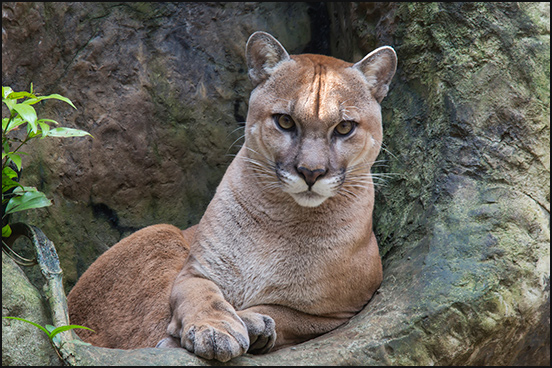
Mountain Lions Extending Range
Mountain lions, also known as cougars, have long been associated with regions outside the Plains, but mountain lions are expanding their territory into the area. According to a new study conducted in North Dakota and South Dakota, however, livestock in the Great Plains may be relatively safe from the big cats.
“There is a risk every time livestock and predators are together,” said Kansas State University (K-State) animal scientist Charlie Lee. “That being said, it seems that the likelihood of mountain lion predation is extremely low in Kansas.”
The study examined the food habits of cougars in prairie and agricultural habitats.
Lee, who is a wildlife management specialist with K-State Research and Extension, noted that while there have been studies of mountain lion eating habits conducted in other regions, it is important to research food sources in the Plains because there are different animals in these regions.
“The cougars’ range has expanded farther eastward, and we know we have cougars in the Black Hills and the Missouri (River) breaks area in North Dakota,” Lee said. “Those cougars have now expanded eastward, and the 14 animals that this food-habit study was based on were collected in North Dakota and South Dakota outside of normal cougar range.”
“These cougars were collected from various locations across those two states in a wide variety of habitats that are not much different from what we would expect to see in Kansas,” Lee said. “The terrain was short grasses and mixed-grass prairies with large agricultural fields.”
Of the 14 animals evaluated, five had more than one prey species in the stomach or intestinal tracts, Lee said. Three of the cougars had empty stomachs and a fourth only contained a small amount of deer.
Half of the cougars had either mule deer or white-tailed deer in their system. Other native species found in the intestines included jackrabbits, porcupines, beavers, badgers, minks and other rodents.
“There were no domestic livestock species documented as part of the cougar diet,” Lee said, but he noted that the remains of domestic house cat were found in the stomachs of two of the cougars.
“In recent years, I have spent an increasing amount of time investigating reported cougar sightings and suspected cougar attacks on domestic livestock in Kansas,” Lee said. “It seems unlikely that any of the livestock I looked at were killed by cougars, but it could occur.”
Lee said it is rare for cougars to attack horses. Fence materials such as barbed wire can cause injuries that could be mistaken for a cougar attack.
Lee encourages livestock producers to consider more common predators, such as coyotes, before assuming an attack was by a cougar. Careful examination of the remains to determine killing and feeding patterns, tracks and scat will help determine the cause when losing a domestic animal.
As Kansas has many deer, it is possible cougars will continue to expand into the region. The state also has other food sources such as raccoons, badgers, beavers and others found in the study. In addition to suitable prey, Kansas also has acceptable cover to allow the cougar to ambush its prey.
The study results are available online at http://pubstorage.sdstate.edu/wfs/514-W.pdf.

Editor’s Note: Connor Orrock is a writer for K-State Research and Extension.






